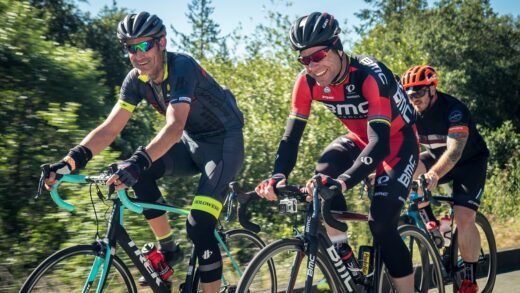Bicycle hubs serve as the heart of a bike’s gear-shifting mechanism. Positioned centrally on the rear wheel axle, they effectively regulate speed.
Have you heard of the Nexus 8 and Alfine 11 hub models? Finding it hard to decide between the two? Let us guide you through it. Dive in for more insights.
Now, the dilemma: Nexus 8 or Alfine 11?
Both these gear hubs hail from the esteemed Shimano family. However, they cater to distinct cycling audiences. While the Nexus 8 primarily appeals to those who ride cargo bikes, the Alfine 11 is tailored for recreational cyclists.
But wait, there’s more! We’ve delved deep into a comprehensive comparison of the two. Trust us, you won’t want to miss this.
Distinguishing Contrasts Between the Nexus 8 and Alfine 11 Bicycle Hubs
As previously noted, both of these bicycle hubs are products of a shared company lineage; nevertheless, their characteristics diverge significantly, effectively addressing disparate segments within the cycling enthusiast demographic.
Without delay, let’s delve into a swift exploration of these discernible disparities.
| Characteristic | Nexus 8 | Alfine 11 |
|---|---|---|
| Gear Variation | Equipped with 8 gears | Offers an impressive 11 gears |
| Lubrication Method | Employs closed grease lubrication | Utilizes an efficient open oil bath lubrication |
| Gear Mechanism | Operates with a straight cut gear system | Incorporates a sophisticated helical gear system |
| Release Mechanism | Features a one-way release mechanism | Incorporates a versatile two-way release mechanism |
| Weight | Tipping the scales at 1685 grams | Carrying a weight of 2268 grams |
With the fundamental distinctions now clarified, we can delve into a more expansive elucidation of these varying characteristics.
Comparative Analysis: Nexus 8 vs. Alfine 11 Bicycle Hubs
Bicycle hubs play a critical role in determining the performance of a bicycle. Depending on the type of cycling one is into, the choice of the hub can greatly influence the cycling experience. Delving into the distinct features of the Nexus 8 and Alfine 11 provides insight into their specialization and suitability for different terrains and user needs.
Number of Gears:
The Nexus 8 is primarily designed for more rugged terrains and heavy-duty requirements such as cargo cycles and mountain/off-road biking. This is mainly because it’s engineered to support heavier weights and cope with the challenges of irregular terrains. On the other hand, the Alfine 11 caters to the urban cyclist, aiming for speed and agility. It’s the go-to choice for individuals who value swift and smooth rides in urban landscapes.
Gear Configuration:
- Nexus 8: As the name suggests, the Nexus 8 comes equipped with 8 distinct gears, enabling a torque range between levels 1 to 8. This range offers versatility for different terrains, particularly where gradient changes are frequent;
- Alfine 11: Alfine 11 stands out with its 11 gear settings. Though it starts at the same minimum torque level as the Nexus 8, it extends up to level 11. This broader range ensures a finer gradation of force application for each pedal stroke, catering to more nuanced speed requirements.
Technical Distinctions:
The Nexus 8’s strength lies in its robust construction. Using Shimano cassettes that operate without a derailleur, the hub allows riders to shift gears even from a stationary position, particularly advantageous on steep inclines. When a derailleur is incorporated, Shimano cassettes are typically paired with SRAM derailleurs to optimize performance.
In contrast, the Alfine 11 prioritizes rapid gear shifts. The increased number of gears, intricately designed, yields a more organic and responsive gear shifting experience. This quick actuation facilitates accelerated speeds, making it apt for racers and those commuting daily.
Energy Distribution:
One of the Alfine 11’s unique features is its ability to distribute torque energy evenly across its speed settings. With more gears, riders can optimize their energy output based on the immediate terrain, leading to more efficient rides, especially on varied urban terrains.
In Summary: When weighing both hubs in terms of performance and adaptability, the Alfine 11 emerges as the more versatile choice due to its broader range of gears and agile design. However, the right hub will always depend on the cyclist’s needs, whether it’s heavy-duty biking or swift city rides.
Comprehensive Guide to the Oil Lubrication System in Bicycles
A bicycle’s lubrication system plays a pivotal role in ensuring the seamless shifting of gears inside the hub. Depending on the design and mechanism, various systems are utilized, each with its choice of lubricant. This variation is designed to cater to different conditions and ensure optimal gear shifting performance.
Closed Grease Lubrication – The Nexus 8 Model:
The Nexus 8 adopts a closed grease lubrication approach. In this system, each gear axle is enveloped by specially designed closed lubrication rims. These rims are meticulously lubricated using a specific type of grease, which provides protection and ensures smooth movement. Interestingly, this style of lubrication isn’t confined to gear hubs. Many bicycles with non-hub gears also benefit from this method.
Furthermore, gears equipped with derailleurs lean towards this lubrication type. The rationale behind this choice stems from the design of front derailleur cables. Being a closed system, they significantly gain from this lubrication technique.
Derailleur Cables – A Quick Spotlight:
Derailleur cables are vital components in a bicycle, contributing immensely to gear-shifting accuracy and speed. Here’s a brief highlight of some commendable derailleur cable options:
- For cyclists seeking a standard option, the Jagwire Slick Stainless Steel Shift/Shifter Cables stand out for their reliability;
- Those aiming for a cost-effective yet high-quality choice should consider the Shimano MTB Optislick Derailleur Cable and Housing Set. It delivers exceptional value for the price.
Open Oil Bath Lubrication – A Deeper Dive:
Moving away from closed systems, the open oil bath lubrication system is tailored specifically for gear hubs. Here, the entire hub’s internal structure is immersed in an oil reservoir. As a result, the gears remain constantly lubricated, ensuring their longevity and consistently smooth operation.
One of the notable bicycles employing this mechanism is the Alfine 11. Its gear shifting mechanism is notably smoother and quicker. When juxtaposed with the Nexus 8 and its closed grease system, the open oil bath lubrication method in the Alfine 11 emerges as relatively new. However, initial observations suggest that it exhibits superior shifting performance, hinting at its potential to revolutionize the world of bicycle gear systems.
The Verdict: Given the current technological advancements and observed performances, the Alfine 11 with its open oil bath lubrication system takes the lead in terms of smooth gear shifting capabilities.
Gear Systems: An In-Depth Look
In the realm of bicycle hubs, two dominant gear systems emerge: the Straight Cut Gear System and the Helical Gear System. Their distinction mainly hinges on the orientation of their teeth.
Straight Cut Gear System: This is the system that the Nexus 8 employs. In this configuration, the gear teeth are aligned parallel to one another. A notable advantage of this linear arrangement is its ability to exert force during each rotation consistently. This results in an enhanced power output and increases the axial load on the gears. Consequently, when appropriately maintained, a bicycle utilizing the Nexus 8 can take on more demanding tasks without faltering.
Helical Gear System: The Alfine 11 opts for the helical system. Characterized by slanted internal teeth, the helical design promotes a more fluid engagement between the gear teeth. This nuanced design choice translates to a more seamless riding experience. The cyclist benefits from a reduction in pedaling effort, which implies they can cover distances without tiring as swiftly. Furthermore, the helical teeth’s distinct curvature augments the bicycle’s overall speed, adding an extra layer of efficiency.
It’s a draw. Each system has its strengths, catering to different rider preferences and demands.
Release System: A Comparative Analysis
The release system underpins the mechanism that facilitates gear shifting in bicycles. Let’s delve into the systems of both Nexus 8 and Alfine 11:
Nexus 8 – Single Release System: As the name implies, the Nexus 8 utilizes a singular point, dubbed the ‘spook point,’ for gear transitions. This simplicity in design reduces the complexity of the system, leading to diminished maintenance demands. However, the downside is a slightly elongated gear shifting time, which might not appeal to those seeking rapid transitions.

Alfine 11 – Two-Way Release System: This system, favored by the Alfine 11, offers an alternative gear shifting approach. By deploying a two-way release, gear shifts are executed more swiftly, improving response times. This design, while efficient, does necessitate more frequent maintenance. Nonetheless, the overall maintenance demands remain relatively low due to fewer spook points in the design.
The Alfine 11 edges out with its more responsive two-way release system, making it the preferable choice for those prioritizing swift gear transitions.
Weight Comparison:
The Nexus 8 exhibits a total weight of 1685 grams, a weight that gracefully rests upon its construction. In stark contrast, the Alfine 11 boldly presents itself as a heavyweight contender, tipping the scales at a substantial 2268 grams. As the gears of discourse turn towards their impact on weight, it becomes evident that the influence of weight on shifting gears is of a marginal nature.
Championing the scale challenge: Nexus 8.
Price Evaluation:
Delving into the realm of price, the Nexus 8 proudly boasts a price tag of 132 USD, an amount that harmonizes with its offerings. Conversely, the Alfine 11 demands a princely sum of approximately 481.62 USD, a financial commitment significantly loftier than that of its counterpart, the Nexus 8.
Triumphant in the price arena: Nexus 8.
Conclusion
The Nexus 8 and Alfine 11 stand out as exceptional offerings in the realm of cycling equipment. If you’re in pursuit of a robust and resilient cycling companion, the Nexus 8 beckons to be your preferred choice. On the contrary, if your aspiration involves a harmonious and well-rounded cycling venture, the Alfine 11 emerges as the optimal selection.
We trust that any lingering queries concerning the comparison between Nexus 8 and Alfine 11 have now been dissipated. In a subsequent piece, our paths will cross once more.
Until then, take your leave with the wind at your back!






